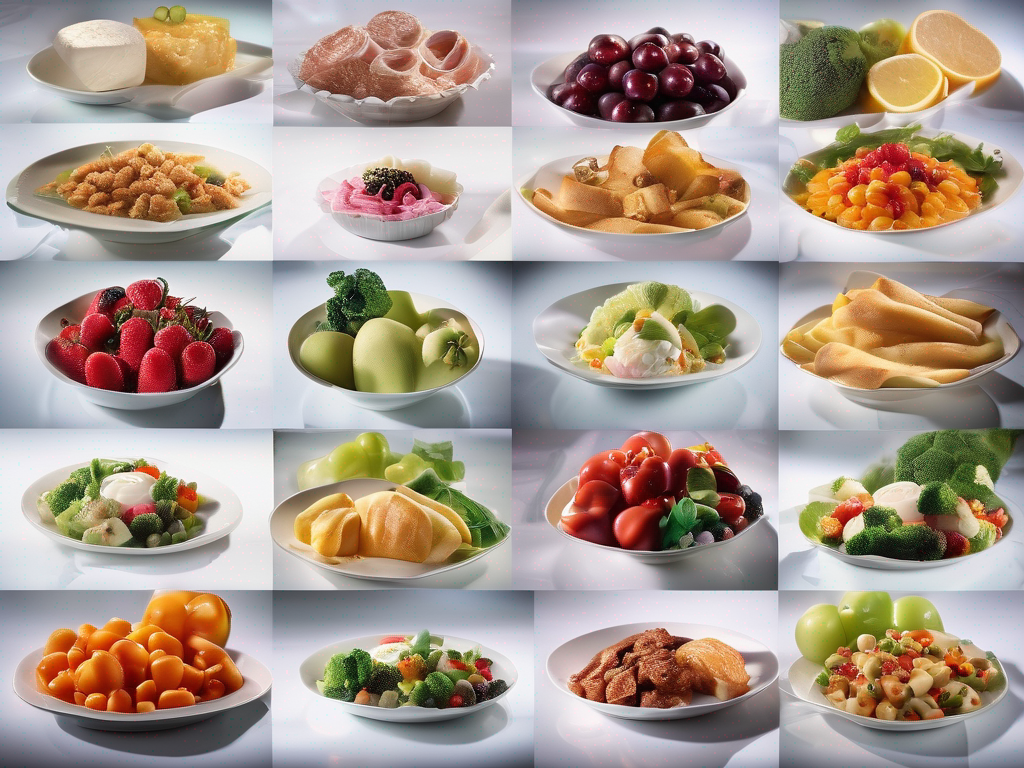
The Ultimate Guide to Pantry Foods: Storage, Safety, and Shelf Life
Get Your Free Food Safety Cheat Sheet
30 most common foods with instant answers. Print it and stick it on your fridge—completely free!
The Ultimate Guide to Pantry Foods: Storage, Safety, and Shelf Life
In every kitchen, the pantry is a treasure trove of essential ingredients that make meal preparation a breeze. From canned goods to dried herbs, the pantry is a storage space for a variety of foods that have a longer shelf life compared to fresh produce. However, to ensure the quality and safety of pantry foods, proper storage practices are crucial. In this comprehensive guide, we will explore everything you need to know about pantry foods, from storage tips to food safety guidelines.
Importance of Proper Pantry Food Storage
Maintaining a well-organized and properly stocked pantry is not only convenient but also essential for food safety. Here are some reasons why proper pantry food storage is important:
Prevents Food Spoilage
Improper storage conditions can lead to food spoilage, resulting in waste and potential foodborne illnesses. By storing pantry foods correctly, you can extend their shelf life and reduce the risk of contamination.
Saves Money
Proper pantry organization helps you keep track of your food inventory, preventing you from buying items you already have. It also allows you to take advantage of sales and discounts by stocking up on non-perishable items.
Promotes Meal Planning
A well-organized pantry makes meal planning easier. By knowing what ingredients you have on hand, you can plan meals more efficiently and reduce last-minute trips to the grocery store.
Tips for Organizing Your Pantry
A well-organized pantry not only looks neat but also helps you find ingredients quickly. Here are some tips for organizing your pantry effectively:
Categorize Items
Separate pantry foods into categories such as grains, canned goods, baking supplies, and spices. Use clear storage containers or bins to keep similar items together.
Label Everything
Labeling shelves and containers will help you quickly locate ingredients and keep track of expiration dates. Use a label maker or sticky labels for easy identification.
Utilize Vertical Space
Maximize storage space by using shelves, racks, or hanging organizers to store items vertically. Make use of the back of the pantry door for additional storage.
Rotate Stock
Practice the "first in, first out" rule to ensure that older items are used before newer ones. When restocking your pantry, place new items at the back and move older items to the front.
Pantry Food Storage Guidelines
Proper storage of pantry foods is essential to maintain their quality and safety. Follow these guidelines to ensure your pantry foods stay fresh and free from contaminants:
Temperature and Humidity
- Store pantry foods in a cool, dry place away from direct sunlight and heat sources.
- Keep the pantry temperature between 50-70°F (10-21°C) to prevent food spoilage.
Air-Tight Containers
- Transfer open packages of pantry foods, such as flour, rice, and nuts, to air-tight containers to prevent pests and moisture from entering.
- Use glass, plastic, or metal containers with tight-fitting lids for optimal storage.
Shelf Life
- Check expiration dates on pantry items regularly and discard any expired or spoiled foods.
- Follow the "use by" and "best by" dates on packaging to ensure food quality.
Pest Control
- Keep pantry shelves clean and free of crumbs to deter pests like ants, beetles, and pantry moths.
- Use pest-proof containers and regularly inspect pantry items for signs of infestation.
Conclusion
Maintaining a well-organized and properly stocked pantry is essential for efficient meal preparation and food safety. By following the tips and guidelines outlined in this guide, you can ensure that your pantry foods remain fresh, safe to consume, and free from contaminants. Remember to regularly review your pantry inventory, rotate stock, and practice proper storage techniques to make the most of your pantry ingredients. Happy cooking!
Remember, a well-organized pantry is not only visually appealing but also plays a crucial role in ensuring the freshness and safety of your stored foods. By following these tips and guidelines, you can create a functional and efficient pantry that makes meal preparation a breeze.
Authoritative Food Safety References
These agencies and university labs inform every tip and health precaution we publish.
USDA FoodKeeper – Cold Storage Guidelines
Official refrigerator, freezer, and pantry timelines maintained by the U.S. Department of Agriculture.
Visit USDA FoodKeeperFDA Produce Safety Rule & Grower Guidance
Field-to-fridge handling practices that prevent contamination of fruits, vegetables, and leafy greens.
Visit FDA Produce SafetyCDC Foodborne Illness Prevention Hub
Surveillance-backed guidance on pathogens, symptoms, and steps to reduce foodborne illness risk.
Visit CDC Food SafetyUC Davis Postharvest Technology Center
University research detailing optimal storage atmospheres for produce after harvest.
Visit UC Davis PostharvestPenn State Extension – Home Food Preservation & Safety
Peer-reviewed extension bulletins on safe canning, chilling, and reheating practices.
Visit Penn State ExtensionGet Your Free Food Safety Cheat Sheet
30 most common foods with instant answers. Print it and stick it on your fridge—completely free! Want more? Upgrade to the complete guide with 70+ foods.
Scan your food directly and get instant safety info using our AI-powered camera feature.